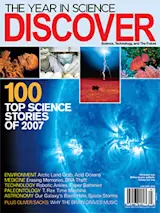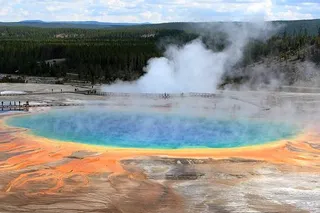Pumicelike, dark, and exotic, carbonado diamonds don’t look like the gemstones on engagement rings. That’s because they may have been created by an exploding star and delivered to Earth by an asteroid billions of years ago.
From Canada to Australia, most diamonds were formed at torturously high temperatures and pressures deep within Earth before being carried to the surface by explosive volcanoes. But the frothy texture of carbonados—found only in Brazil and the Central African Republic—is too full of bubbles to cut and polish into a gem. They are “just totally incompatible with a deep-earth origin,” says Stephen Haggerty, a geologist at Florida International University.
Haggerty and his colleagues analyzed the chemical composition of the diamonds by bouncing infrared light off polished slivers. The resulting spectra, reported in The Astrophysical Journal Letters in December 2006, don’t match signatures for terrestrial hydrogen and nitrogen but instead mimic those found in interstellar ...














